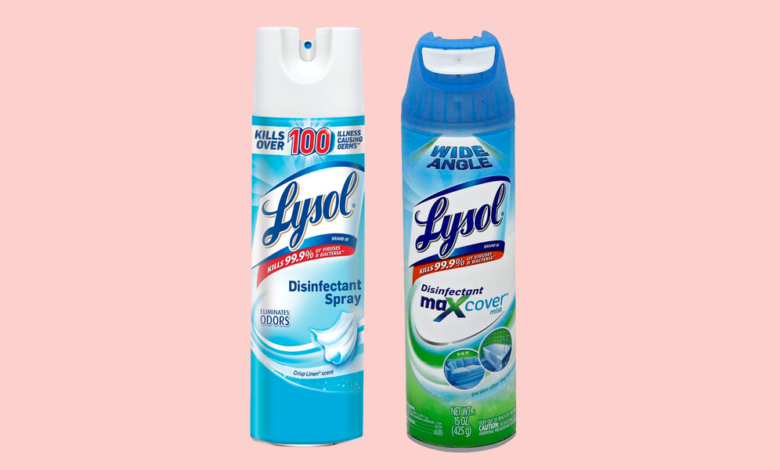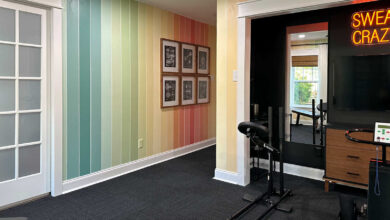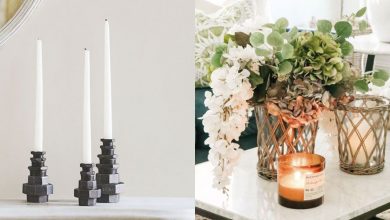What Kills Germs? How to Kill Coronavirus and Disinfect Your Home

Killing risky germs on household surfaces is nothing new; you’re probably already doing it when you routinely clean the bathroom and after you handle raw meat or chicken in the kitchen. During the novel coronavirus pandemic, however, keeping all frequently-touched household surfaces — like faucet handles, phones, and remote controls — germ-free is more top-of-mind than ever.
Since COVID-19 is a new disease caused by SARS-CoV-2, a respiratory virus that causes coronavirus to spread, experts continue to study the ways that the virus thrives on surfaces across the home and how the recent newfound strains multiply and spread. Regular soap and water cleans germs away and cuts down the quantity of germs, which also reduces the chance of infection, but to actually kill germs, you also must sanitize or disinfect surfaces after cleaning them. It’s important to know that not all cleaning products that claim to disinfect are equally effective on all types of germs. There are many types of bacteria and viruses and not every product kills them all.
Below, we’re highlighting which products specifically work on the coronavirus, how to properly use them for maximum effectiveness — and which to avoid.
What products kill coronavirus on surfaces?
Two Lysol products were the first to have been directly sanctioned by the U.S. Environmental Protection Agency (EPA) for use against the spread of COVID-19 specifically, according to a July 2020 release from the agency. Since then and as a result continued testing, more products have been added to the list of disinfectants the EPA recognizes as effective on SARS-CoV-2. There are now over 500 disinfectant wipes, sprays, and other products that are either approved or known to wipe out germs similar to — or even more difficult to kill than — SARS-CoV-2. Of this, 56 products have been tested and proven to kill the virus.
The products the EPA has added to the list of those approved to kill SARS-CoV-2 on hard non-porous surfaces include:
The EPA has also expanded its list of products that — while not specifically tested on SARS-CoV-2 — have been proven effective on similar or harder-to-kill viruses, such as the rhinovirus that causes the common cold; they expect these to work on the coronavirus, too. These products include:
These products use a variety of different ingredients and formulations, so be sure to use them exactly as the label directs.
How to use cleaning products to kill coronavirus
Before using any sanitizing or disinfecting product, start by reading the label to make sure it is registered with the EPA and to see what strains of bacteria and viruses it kills. The EPA registration number can usually be found in small type on the bottom of the front or back label, and the bacteria and viruses the product is effective against are also usually listed.
EPA registration is required by law for any cleaner that claims to kill germs. It’s what we rely on in the Good Housekeeping Institute Cleaning Lab when we evaluate sanitizing and disinfecting products and it assures you that if you follow the directions, the product will work as claimed.
A few more points:
- Know that sanitizing is not the same as disinfecting. Sanitizing (reduces the risk of illness by killing 99.9% of germs) usually takes less time — sometimes just 30 or 60 seconds — while disinfecting (killing 99.999% of germs) can take anywhere up to 10 minutes, depending on the product.
- Check the label for how long hard, non-porous surfaces must stay wet for the most effective germ killing. Because liquids evaporate, this may require you to apply the product multiple times.
- No product can adequately sanitize or disinfect a dirty surface, so make sure you clean — even with plain soap and water — before you disinfect.
What DIY household cleaner kills coronavirus?
According the the U.S. Center for Disease Control (CDC), an easy way to disinfect hard, non-porous surfaces with a product you likely have at home is:
- Combine 1/3 cup of regular chlorine bleach (sodium hypochlorite) bleach per gallon of water. (Clorox’s newest bleach label recommends using 1/2 cup bleach per 3/4 gallon of water and allowing it to remain on the surface for two minutes.) For small batches, use 4 teaspoons of regular chlorine bleach and 1 quart of water.
- To use: Wearing gloves, dip a cloth into the mixture, wipe the surface, allowing the solution to contact the surface for five minutes and air dry. Rinse all surfaces, including food contact surfaces, like countertops and high chair trays, with warm water and air dry after disinfecting. Be careful not to splash the bleach solution on your clothes or in your eyes and use it sparingly on stainless steel sinks and surfaces. It’s also important to note that the bleach and water solution needs to be made fresh each day you use it.
Does hydrogen peroxide kill viruses and bacteria?
According to the CDC, hydrogen peroxide is a stable and effective disinfectant against a wide variety of microorganisms, including bacteria and viruses, when used on hard, non-porous surfaces. Typically sold in 3% solutions, hydrogen peroxide can be used as is, directly from the bottle. It’s best to keep it away from fabrics when cleaning and to wear gloves to protect your hands.
- To use: Spray or wipe it on the surface, allowing it to remain wet for at least one minute before wiping.
Will alcohol disinfect surfaces?
Isopropyl alcohol is an effective disinfectant against many pathogens, including coronavirus, as long as the concentration is 70%. Most rubbing alcohols are 70% isopropyl alcohol, but concentrations can range from 60-99%. For killing coronavirus quickly on surfaces, 70% is best — pure (100%) alcohol evaporates too quickly to be effective.
- To use: Wipe or spray the surface with the alcohol and make sure it remains wet for at least 30 seconds.
Can vinegar kill germs?
No. According to the CDC and NSF (a public health and safety organization), vinegar (or vinegar-based alternative cleaning products) should not be used to disinfect or sanitize. Vinegar-containing cleaning products can be a good in some instances, but vinegar is not registered with the EPA as a disinfectant and is ineffective against most bacteria and viruses – it does not kill the flu or coronavirus. Undiluted white vinegar may work on some limited types of bacteria, but it’s not the best way to get surfaces germ-free. (Besides, coronavirus is a virus, not a bacteria.
What kills germs on fabric?
Soft surfaces are porous, so it’s more difficult to kill germs on them than it is on smooth, non-porous surfaces, like countertops. Some regular spray products that disinfect hard surfaces, like Lysol Disinfectant Spray and Clorox 4-in-1 Disinfecting Spray, can also be used to sanitize soft surfaces, like throw pillows, plush toys, and mattresses. This means that germs are greatly reduced, but not totally eliminated. There are also sprays specifically formulated for use on fabrics, like Tide Antibacterial Spray and Clorox Fabric Sanitizer.
Another way to kill bacteria on fabrics is by washing and drying them on the sanitizing cycles in the washer and dryer, if your models have them. If not, try a laundry sanitizer, like Clorox. It’s a liquid that you add to the rinse cycle to kill bacteria in the wash. Fortunately, regular washing with a good deep-cleaning detergent, like GH Seal star Tide Hygienic Clean, removes respiratory viruses, like SARS-CoV-2 virus, but if you want to do more, the EPA has approved Lysol Launder Sanitizer as a way to disinfect fabrics when used as a laundry presoak only.
What kills germs in the air?
The best way to remove airborne germs is by improving the air circulation in your home, so that fresh air regularly replaces germ-laden air. Opening the windows certainly helps, but that may not always be possible. There are also spray air sanitizers, like Lysol Neutra Air, that you can use to kill airborne odor-causing bacteria. Spray it into the air for 10 seconds and it works to temporarily kill airborne bacteria and reduce odors.
Another option is to use a whole home or room air purifier that’s equipped with technologies inside to kill bacteria and viruses in the air it pulls in, so the air it puts out is free of these pathogens. Not all air purifying systems kill germs and they are only effective if they circulate a significant amount of clean air into the room within a short period of time.
While Good Housekeeping has not tested germ-killing air purifiers, we do recommend that when you buy any room air purifier, make sure it is appropriately sized for the space you want to purify. Look for one with a HEPA filter and one that’s verified by the Association of Home Appliance Manufacturers (AHAM) with a high Clean Air Delivery Rate (CADR) for the smoke, dust and pollen it filters. The higher the CADR, the faster the unit filters the air.
Can UV light kill germs in the house?
Powerful UV light devices are used in hospitals for killing germs on surgical tools and in rooms. The most effective wavelength is UV-C (compared to UV-A and UV-B) because it is the shortest wavelength (200 to 280 nanometers) and with high energy to kill bacteria and spores and inactivate viruses. At-home UV sanitizing devices, however, are less powerful than those used in hospitals and some may even pose safety risks. They run the gamut from small boxes for phones and keys to countertop cabinets for larger items to wands that you wave over surfaces.
How truly effective these at-home UV devices are, especially on the SARS-CoV-2 virus, is still in question by experts and the EPA does not regulate sanitizing or disinfecting devices. Keep in mind that to see any germ-killing benefits, the UV-C light needs to contact the surface for a specified period of time, so a quick wave of a wand over a keyboard isn’t likely to do much. UV-C light is most effective on flat, non-porous surfaces and less so on items with ridges or texture. It’s also damaging to eyes and skin, so devices that close and automatically shut off for safety are best. Stay away from products that downplay or completely ignore the risks of UV-C light exposure, overplay their germ-killing benefits, and that aren’t tested and certified for safety (not germ-killing efficacy) by an organization, like UL.
What temperature kills germs in the house?
Only heat — not cold — can kill germs, like bacteria and viruses. Cold temperatures inactivate them, but once they warm up, they become active again. The sanitizing cycles on your washer, dryer, and dishwasher are effective bacteria killers for laundry and dishes, as is a steamer for floors and other household surfaces, provided the steam contacts the surface for a long enough period of time. To date, at-home steamers have not be recognized by the EPA as an effective way to kill the coronavirus.
To kill the SARS-CoV-2 virus, a surface must be exposed to temperature of 160°F for three minutes or up to 20 minutes if the temperature is 140°F.
What else you should know about cleaning your home right now
- Never combine disinfecting or any cleaning products and open the window or ventilate a room if fumes become bothersome.
- Test surfaces for safety in a hidden spot before using alcohol, hydrogen peroxide, or any disinfectant on a surface, especially a delicate one. On food contact surfaces, rinse with clear water and dry after disinfecting, unless the product label specifically says it’s not necessary.
As more information about the coronavirus pandemic develops, some of the information in this story may have changed since it was last updated. For the most up-to-date information on COVID-19, please visit the online resources provided by the CDC, WHO, and your local public health department.
This content is created and maintained by a third party, and imported onto this page to help users provide their email addresses. You may be able to find more information about this and similar content at piano.io
Source link






